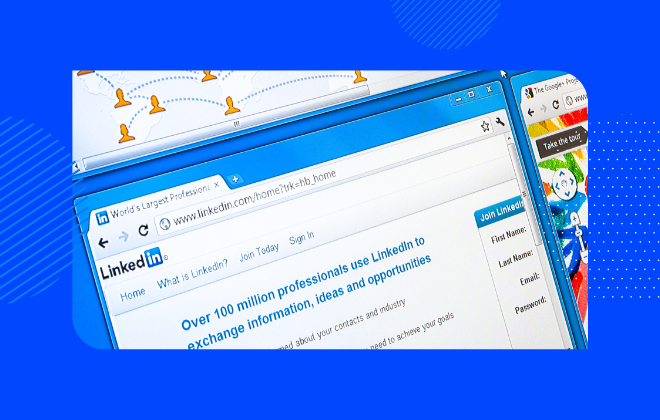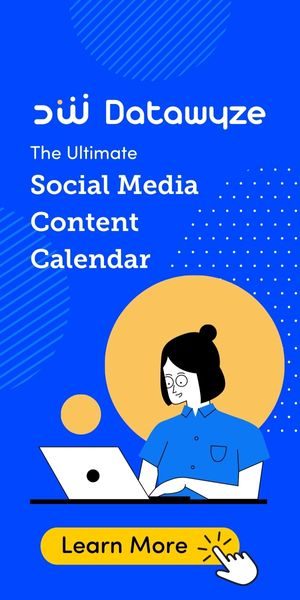In this article, we will take a closer look at LinkedIn Ads, one of the most effective ways to leverage LinkedIn’s reach for B2B marketing. We will cover the must-do strategies for conversion optimization and explore how LinkedIn Ads can help you achieve your business goals.
What are LinkedIn Ads?
LinkedIn Ads are a form of paid advertising on LinkedIn, which allows businesses to reach their target audience and promote their products or services. With LinkedIn Ads, you can create customized ads based on your target audience, ad format, and ad placement. LinkedIn Ads offers a range of ad formats to choose from, including Sponsored Content, InMail Ads, Dynamic Ads, and Text Ads.
Why Use LinkedIn Ads for B2B Marketing?
LinkedIn is a unique social media platform that is specifically designed for professional networking and B2B marketing. Here are some reasons why you should consider using LinkedIn Ads for your B2B marketing strategy:
- Targeted Audience: LinkedIn offers a range of targeting options that allow you to reach your desired audience based on demographics, job title, company size, industry, and other criteria. This enables you to reach a highly targeted audience that is more likely to be interested in your product or service.
- Professional Environment: LinkedIn is a professional platform, and users are typically more engaged and receptive to business-related content. This makes it an ideal platform for B2B marketing, where businesses can showcase their expertise and build relationships with potential customers.
- High Quality Leads: LinkedIn is known for its high-quality leads. Since users on LinkedIn are usually professionals, they are more likely to be decision-makers in their organizations. This means that if you can attract their attention with your ads, you are more likely to generate leads that can convert into customers.
- Cost-Effective: Compared to other social media platforms, LinkedIn Ads are relatively cost-effective. This is because LinkedIn offers a range of bidding options, allowing businesses to choose the bid that works best for their budget.
1. Must-Do Strategies for Conversion Optimization
To make the most of your LinkedIn Ads, you need to optimize your campaigns for conversion. Here are some must-do strategies for conversion optimization:
- Define Your Target Audience: Before you start your ad campaign, it’s essential to define your target audience. This will help you create ads that are tailored to their interests and needs. Use LinkedIn’s targeting options to define your audience based on job title, industry, company size, location, and other criteria.
- Choose the Right Ad Format: LinkedIn offers a range of ad formats, and it’s essential to choose the right format for your campaign. For example, if you want to promote a white paper or case study, Sponsored Content may be the best choice. If you want to reach decision-makers in a specific company, InMail Ads may be a better choice.
- Create Engaging Ad Content: Your ad content should be engaging and informative, so it’s important to use catchy headlines and images, and clear calls-to-action to encourage users to click through to your landing page.
- Optimize Your Landing Page: Once users click through to your landing page, it’s essential to ensure that the page is optimized for conversion. It’s important to ensure that the page is relevant to your ad content and that it’s easy to navigate.
- Monitor and Optimize Your Campaign: Finally, it’s essential to monitor and optimize your campaign regularly. Use LinkedIn Ads’ native analytics tools to track your campaign performance and identify areas for improvement. Test different ad formats, targeting options, and ad content to see what works best for your audience. Adjust your campaign accordingly to improve your conversion rate and maximize your return on investment (ROI).
2. LinkedIn Ads Formats
LinkedIn offers several ad formats that businesses can use to promote their products or services.
Let’s take a closer look at each of these formats:
- Sponsored Content: Sponsored Content appears in users’ LinkedIn feeds, just like regular content. Sponsored Content is a great way to promote blog posts, white papers, case studies, and other types of content. Sponsored Content can be in the form of a single image, a carousel, or a video.
- InMail Ads: InMail Ads are ads that appear in users’ LinkedIn inboxes. InMail Ads are a great way to reach decision-makers and promote events, webinars, and other products or services.
- Dynamic Ads: Dynamic Ads are personalized ads that are tailored to users’ LinkedIn profiles. Dynamic Ads can include a user’s name, job title, or company logo, making them more relevant and engaging.
- Text Ads: Text Ads are simple ads that appear on the right-hand side of users’ LinkedIn feeds. Text Ads are a cost-effective way to reach a targeted audience and promote your products or services.
3. LinkedIn Ads Targeting
One of the most significant advantages of LinkedIn Ads is the ability to target specific audiences based on their job title, industry, company size, location, and other criteria.
Here are some targeting options that you can use in your LinkedIn Ads campaigns:
- Job Title: Target users based on their job title, including CEOs, CMOs, CFOs, and other decision-makers.
- Industry: Target users based on their industry, including finance, healthcare, technology, and others.
- Company Size: Target users based on the size of their company, including small businesses, mid-size companies, and large enterprises.
- Location: Target users based on their location, including country, region, or city.
- Skills: Target users based on their skills and expertise, including programming, marketing, sales, and others.
For more information on LinkedIn Ads’ available targeting parameters, as well as best practices, visit: https://business.linkedin.com/marketing-solutions/cx/21/10/ad-targeting
4. LinkedIn Ads Budgeting
LinkedIn Ads are relatively cost-effective compared to other social media platforms. However, it’s essential to set a budget for your campaign to ensure that you get the best return on investment.
Here are some tips for setting your LinkedIn Ads budget:
- Define your campaign goals: Before setting your budget, it’s essential to define your campaign goals. Are you looking to generate leads, drive traffic to your website, or increase brand awareness?
- Choose your bidding options: LinkedIn offers several bidding options, including cost-per-click (CPC), cost-per-impression (CPM), and cost-per-send (CPS). Choose the bidding option that works best for your campaign goals.
- Set your daily budget: Set a daily budget that you are comfortable spending on your campaign. LinkedIn will automatically adjust your ad spend to ensure that you stay within your daily budget.
- Monitor and adjust your budget: Monitor your campaign performance regularly and adjust your budget as needed. If your campaign is performing well, you may want to increase your budget to reach a larger audience.
5. LinkedIn Ads Optimization
To maximize the effectiveness of your LinkedIn Ads, it’s essential to optimize your campaigns regularly. Here are some tips for optimizing your LinkedIn Ads:
- Test different ad formats: Test different ad formats to see what works best for your audience. Try Sponsored Content, InMail Ads, Dynamic Ads, and Text Ads to see which ad format generates the most engagement and conversions.
- Test different targeting options: Test different targeting options to see which criteria generate the most engagement and conversions. Try targeting users based on their job title, industry, company size, location, and skills to see which targeting options work best for your campaign goals.
- Test different ad content: Test different ad content, including headlines, images, and calls-to-action, to see which ad content generates the most engagement and conversions. Use A/B testing to test different ad variations and identify the best-performing ads.
- Use LinkedIn Ad analytics: Use LinkedIn Ad analytics to track your campaign performance and identify areas for improvement. Monitor your ad’s click-through rate (CTR), conversion rate, and cost-per-click (CPC) to see how your campaign is performing.
- Optimize your landing pages: Your LinkedIn Ads should lead users to a landing page that is relevant to the ad content. Make sure your landing page is optimized for conversions and includes a clear call-to-action.
Conclusion
LinkedIn Ads are a powerful tool for B2B marketers looking to reach decision-makers and promote their products or services. To use LinkedIn Ads effectively, it’s essential to choose the right ad format, target the right audience, set a budget, and optimize your campaign regularly. By following these best practices, you can create a successful LinkedIn Ad campaign that generates leads, drives traffic to your website, and increases brand awareness.
If you need help with your LinkedIn Ads or B2B marketing strategy, contact Datawyze, a leading digital marketing agency that specializes in B2B marketing. Our team of experts can help you create a custom LinkedIn Ad campaign that meets your campaign goals and generates results. Contact us today to learn more!





